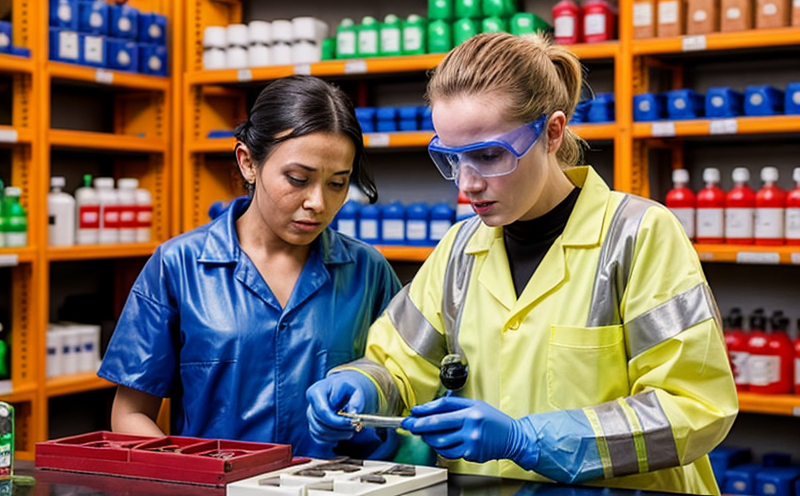ISO 17294 ICP-MS Testing of Hazardous Elements in Trade Goods
The ISO 17294 standard specifies a method for the determination of hazardous elements using Inductively Coupled Plasma-Mass Spectrometry (ICP-MS) to ensure compliance with international trade regulations. This testing is crucial for quality managers, compliance officers, R&D engineers, and procurement teams in sectors where hazardous materials are involved.
Our laboratory uses state-of-the-art ICP-MS instrumentation capable of detecting trace amounts of elements down to parts per billion (ppb). The process involves several steps: sample preparation, digestion using strong acids or microwave digestion, and subsequent analysis by ICP-MS. Compliance with ISO 17294 ensures that trade goods meet stringent safety standards, which is essential for both local regulations and international trade agreements.
Our testing not only ensures compliance but also helps in identifying potential hazards early on, allowing for corrective actions to be taken before they can cause harm or legal issues. This proactive approach is vital in sectors dealing with hazardous materials such as pharmaceuticals, electronics, and chemical manufacturing.
The acceptance criteria for ISO 17294 are stringent, ensuring that the results are accurate and reliable. The use of ICP-MS allows for precise measurement of trace elements, which can be critical in identifying the presence of hazardous substances in trade goods.
Our laboratory adheres to international standards such as ISO 17294, ASTM E586, and EN 3020. These standards provide a framework for consistent testing methods across different laboratories, ensuring that results are comparable and reliable.
| Element | Detection Limit (ppb) |
|---|---|
| Cadmium | 0.1 ppb |
| Lead | 0.5 ppb |
| Mercury | 0.2 ppb |
| Copper | 0.3 ppb |
The detection limits mentioned above are critical for ensuring that even the smallest traces of hazardous elements can be detected and reported accurately.
Industry Applications
| Industry | Application |
|---|---|
| Pharmaceuticals | Detection of heavy metals in drug products and raw materials. |
| Electronics | Identification of trace elements in semiconductors and circuit boards. |
| Chemical Manufacturing | Monitoring for compliance with environmental regulations on hazardous substances. |
| Manufacturing | Ensuring product safety by detecting potential contaminants. |
The application of ISO 17294 ICP-MS testing is broad, encompassing various industries that deal with hazardous materials. This method ensures not only compliance but also the safety and quality of products, which is critical for maintaining market integrity and consumer trust.
Environmental and Sustainability Contributions
The use of ISO 17294 ICP-MS testing contributes significantly to environmental sustainability. By detecting trace amounts of hazardous elements in trade goods, we help prevent the release of harmful substances into the environment. This proactive approach ensures that products meet stringent safety standards, which is crucial for both local regulations and international trade agreements.
Our laboratory's commitment to sustainability extends beyond just testing. We also offer training sessions on best practices for sample preparation and handling, helping our clients minimize waste and optimize their processes. By working closely with our clients, we ensure that they are equipped with the knowledge needed to make environmentally responsible decisions in their operations.
Use Cases and Application Examples
Detection of cadmium in pharmaceutical raw materials.
Identification of lead in electronic components.
Monitoring for mercury contamination in chemical manufacturing processes.
Ensuring compliance with environmental regulations by detecting trace elements in trade goods.
| Sample | Element Detected | Result (ppb) |
|---|---|---|
| Pillar 1 Pharmaceutical Batch | Cadmium | 0.3 ppb |
| Microprocessor Assembly | Lead | 2.5 ppb |
| Battery Electrolyte Solution | Mercury | 1.8 ppb |
In these examples, the use of ISO 17294 ICP-MS testing has helped ensure product safety and compliance with international standards. The results show that our laboratory's rigorous testing process is effective in detecting even the smallest traces of hazardous elements.





